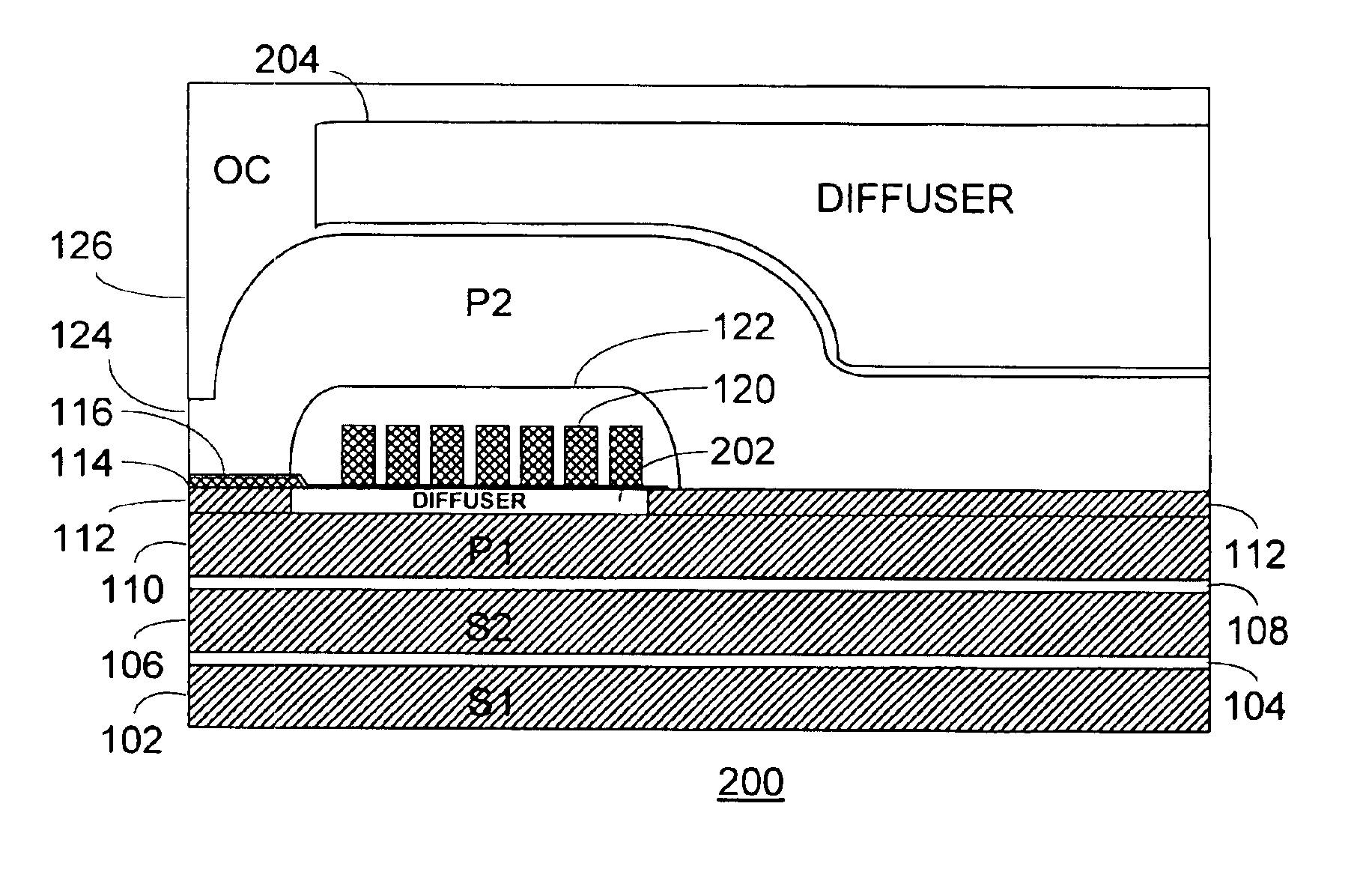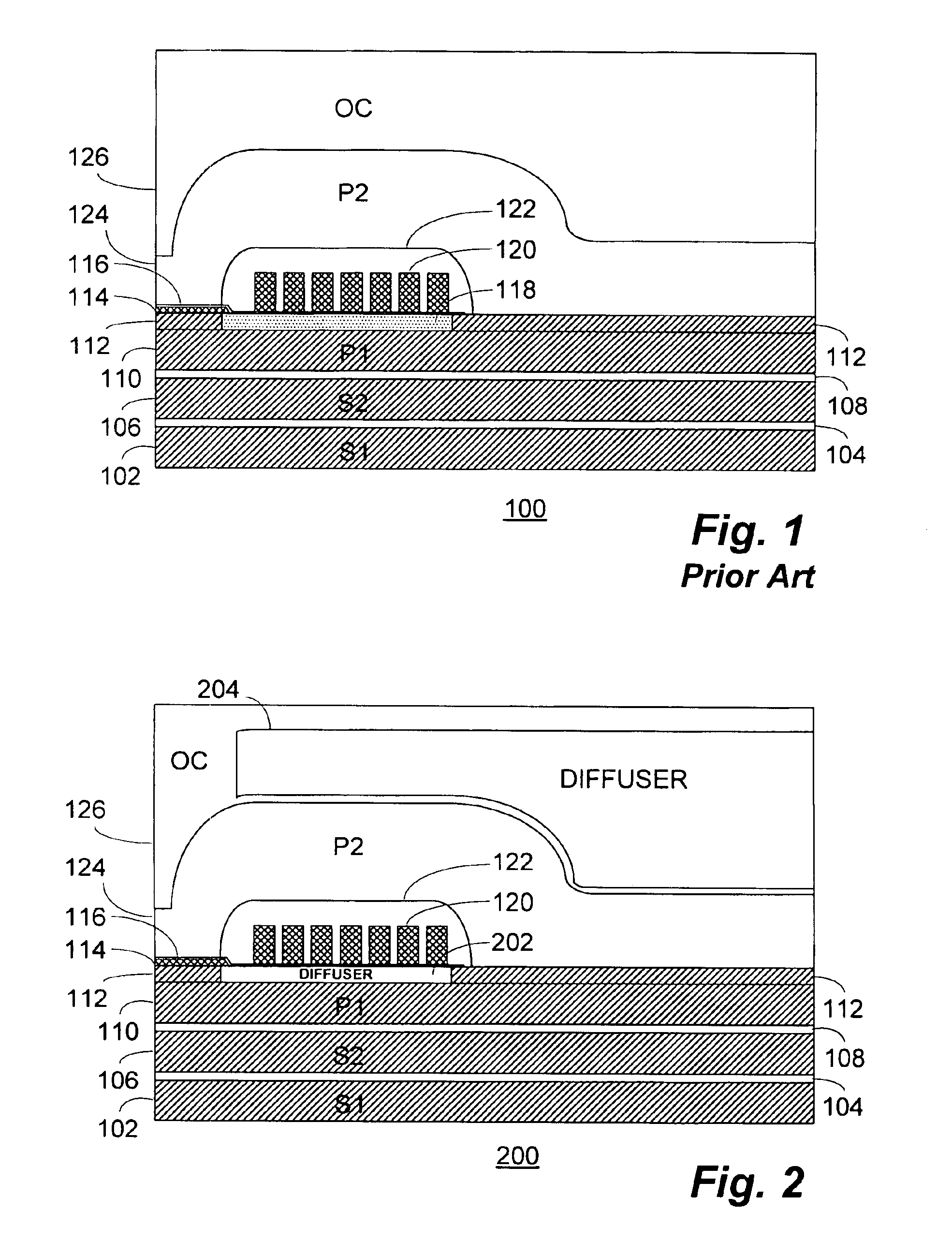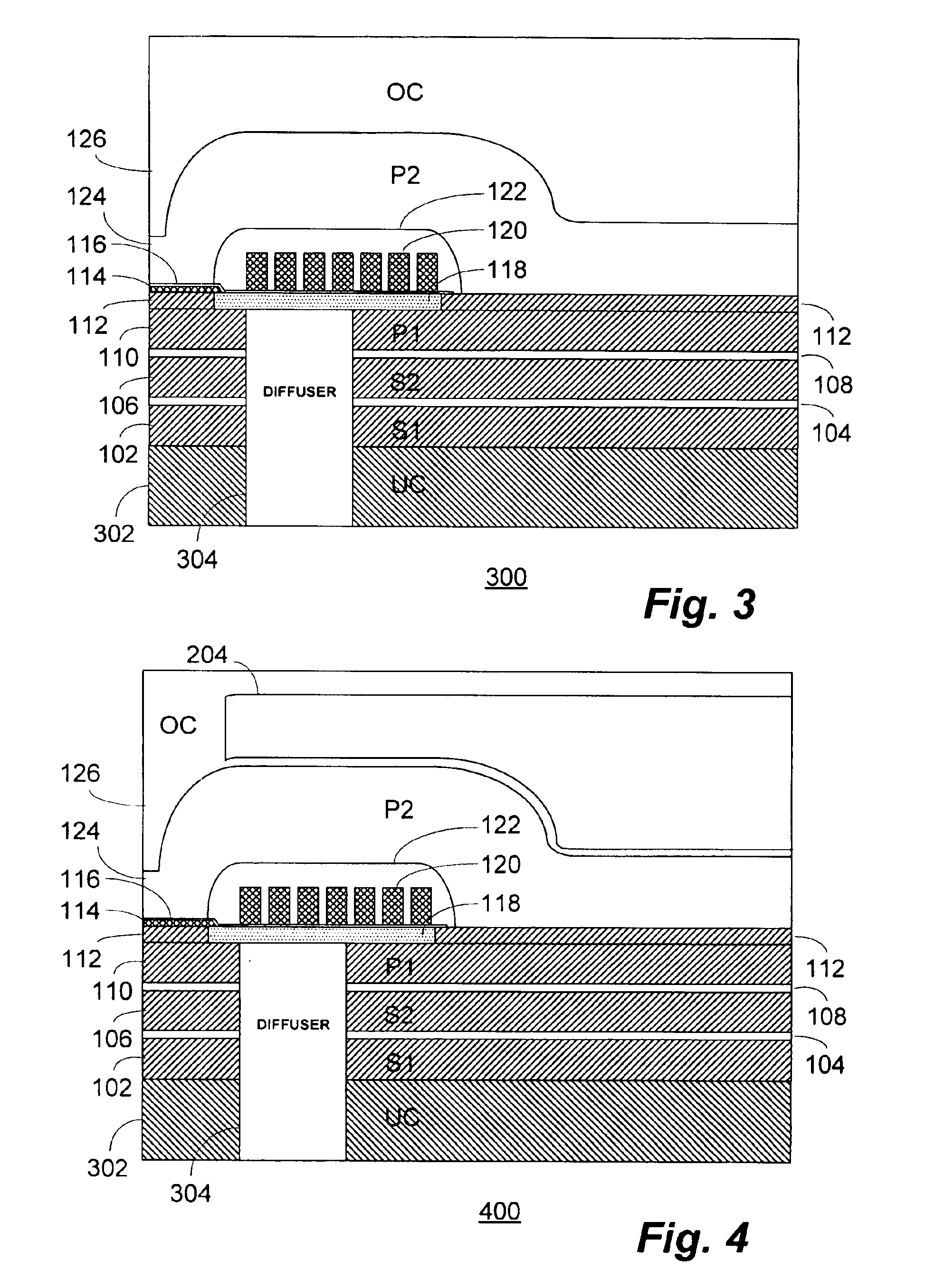Technique for reducing pole tip protrusion in a magnetic write head and GMR stripe temperature in an associated read head structure utilizing one or more internal diffuser regions
- Summary
- Abstract
- Description
- Claims
- Application Information
AI Technical Summary
Benefits of technology
Problems solved by technology
Method used
Image
Examples
Embodiment Construction
[0020]With reference now to FIG. 1, a simplified cross-sectional view of a portion of a conventional inductive write head 100 is shown. The write head 100 may form one part of a “merged-head” or “shared shield” transducer structure in conjunction with a magnetoresistive (“MR”), GMR or other read head (not shown).
[0021]The write head 100 comprises, in pertinent part, a first shield layer (“S1”) 102 which may be formed, for example on an undercoat layer (not shown) of the overall transducer structure. A reader gap layer 104 is intermediate the first shield layer 102 and a second shield layer (“S2”) 106. A piggyback gap layer 108 separates the second shield layer 106 from the first pole (“P1”) 110. The first and second shield layers 102, 106 may be formed, for example, of permalloy and be between 1.5 and 2.0 microns in thickness.
[0022]A pedestal layer 112 is formed overlying the first pole 110 and is patterned to form the pedestal shown adjoining the air bearing surface of the write he...
PUM
 Login to View More
Login to View More Abstract
Description
Claims
Application Information
 Login to View More
Login to View More - R&D
- Intellectual Property
- Life Sciences
- Materials
- Tech Scout
- Unparalleled Data Quality
- Higher Quality Content
- 60% Fewer Hallucinations
Browse by: Latest US Patents, China's latest patents, Technical Efficacy Thesaurus, Application Domain, Technology Topic, Popular Technical Reports.
© 2025 PatSnap. All rights reserved.Legal|Privacy policy|Modern Slavery Act Transparency Statement|Sitemap|About US| Contact US: help@patsnap.com



